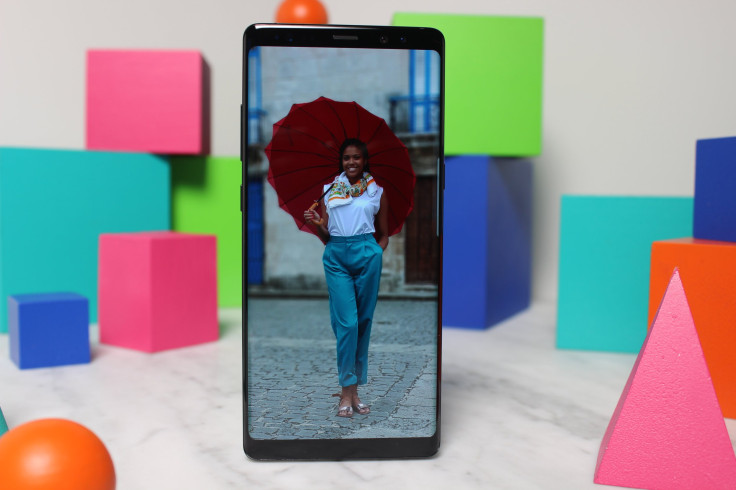Samsung Galaxy Note 9 Release Date Could Introduce Display Embedded Fingerprint Sensor

The Galaxy Note 9 may be Samsung’s first smartphone to feature an in-display fingerprint sensor, according to KGI Securities analyst, Ming-Chi Kuo. The mobile supply expert indicates that Samsung is gearing up to have an "under-display optical fingerprint sensors" ready for devices during the second half of 2018.
Samsung is deciding between several suppliers for its embedded fingerprint scanner, according to Business Insider. The manufacturer has reportedly already received component samples from Synaptics and BeyondEyes. Samsung LSI and Egis (the latter of which provides capacitive fingerprint sensors for Samsung) are also in the running.
If reports are true, Samsung could have an advantage against Apple in the upcoming 2018 release cycle. As consumers await the iPhone X launch, estimates indicate Apple biometric technology is ahead of all of its competitors by over two and a half years. The iPhone X will release in November, featuring a Face ID facial recognition system but no fingerprint sensor.
However, considering that Galaxy Note devices typically hit the market ahead of iPhones, there is a good chance any new technology Samsung introduces in 2018 will be announced before Apple’s products for that year. There is no word on whether future super premium iPhones will reintroduce a fingerprint sensor, whether capacitive or in-display.
Most high-end smartphone manufacturers were expected to unveil devices with display embedded fingerprint sensors in 2017. In January, biometric suppliers, such as Synaptics expected devices in released in late 2017 to include the feature. Instead, consumers saw several companies introduce devices with edge-to-edge or no-bezel displays and no physical home button as a preamble to the to the in-display fingerprint sensor.
Reports indicate that manufacturers across the industry had trouble getting in-display fingerprint sensors to work seamlessly with OLED displays for mass production. Many Android device makers have opted to put capacitive fingerprint sensors on the back of recent devices, instead of getting rid of the feature altogether. Many companies have also invested in other biometric features. The Galaxy S8 introduced a facial recognition feature, while the LG V30 introduced voice recognition.
While Apple’s Face ID is considered to be more advanced than its competitors, there has been concern about whether the feature will work properly and whether it will bring up privacy concerns for iPhone users. Additionally, many anticipating the device may have a hard time purchasing it as supplies are expected to be delayed until March 2018 due to manufacturing issues with both the 3D sensors for Face ID and OLED display on the device.
If the feature isn’t properly executed on the iPhone X, Samsung may have a chance to peek consumers interest with a never before seen feature in 2018. Though there is no word how close other major manufacturers, including Huawei and LG, are to introducing their own devices with display embedded fingerprint sensors.
© Copyright IBTimes 2024. All rights reserved.






















